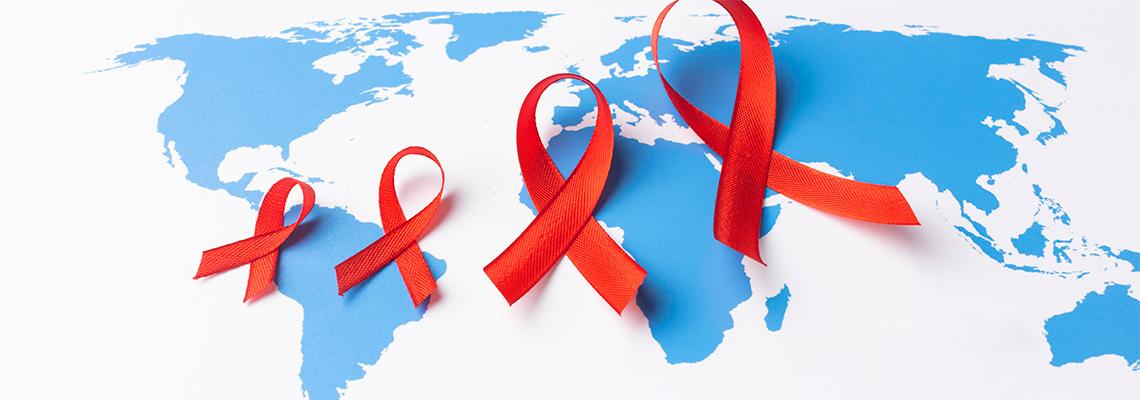News
40 years of the fight against HIV | 1983-2023
Forty years of the AIDS virus: 1983-2023
In June 1981, the first cases of a new disease were reported in the United States. At first, it was referred to as “gay syndrome”, because it appeared mainly to affect the male homosexual community, and was also later called “4H syndrome” (for homosexuals, heroin users, haeomophiliacs, and Haitians). The term AIDS, standing for Acquired Immune Deficiency Syndrome, was definitively adopted in 1982 to refer to this disease, whose multiple clinical manifestations are the result of the gradual failure of the immune system.
The discovery of HIV: a controversial story between France and the United States
In 1983, the culprit responsible for this syndrome was identified by Prof. Luc MONTAGNIER and his team at the Institut Pasteur: a retrovirus initially referred to as LAV (for Lymphadenopathy Associated Virus, as it was found in a lymph node taken from a patient). Their publication was met with some scepticism. It was not until 1984, when American Robert GALLO, known for discovering the first human retrovirus several years earlier, claimed to have discovered the AIDS virus, which he called HTLV3. It was quickly shown that LAV and HTLV3 were one and the same virus. A legal battle ensured, with huge financial sums at stake for the provision of screening. In 1986, the virus was definitively named HIV (Human Immunodeficiency Virus) and an agreement reached in 1987 shared screening royalties between France and the US. The controversy surrounding the discovery of HIV would only be settled in 2008, when the Nobel Prize for Medicine was awarded to the French scientists Luc MONTAGNIER and Françoise BARRE-SINOUSSI.
From AZT to current therapies: the development of HIV treatment
It was also in 1987 that AZT went on the market, the first treatment for HIV infection. The arsenal of treatments was later gradually developed to include new drugs attacking the various mechanisms by which the virus replicates, culminating in early 1996 with the use of ”tritherapies” that would allow complete, long-term control of the viral load. However, these treatments were heavy and restrictive, sometimes requiring the patient to take up to 20 pills every day, with numerous side effects. Over the next few years, research focused on simplifying treatments, which now consist of only one or two tablets daily with much improved tolerance. More recently, in some cases, patients only need an intramuscular injection every two months. In addition to the obvious quality of life benefits, patients can now look forward to a “normal” life expectancy.
HIV screening and prevention: effective ways of combating the epidemic
But HIV remains a problem. There are over 5,000 new cases annually in France, a figure that has remained stubbornly consistent over many years, and four decades on the long-awaited vaccine is still not available. But it is important to keep in mind that despite the lack of a vaccine, there are still effective ways to slow or even stop the spread of HIV completely, namely prevention and early screening. This last point is especially crucial, given that there are an estimated 30,000 people who are unknowingly HIV-positive, 50% of new patients had never previously been tested for HIV, and 30% of newly diagnosed HIV patients are already at an advanced stage of the illness!
Charities and other organisations actively engaged in the fight against HIV in the Principality of Monaco
Information, prevention, screening are still the key words of our message, and as such it is important to acknowledge the essential role of charities and other organisations since the start of the epidemic. They include AIDES, Act Up, SIDA Info Service, and of course, in the Principality, all of the volunteers at Fight Aids who, led by the charity’s President HSH Princess Stéphanie, regularly organise information and screening campaigns. A similarly important role is played by the Monegasque Screening Centre, whose CDAG section created in 1988 by Sovereign Ordinance, signalled the commitment of the Prince’s Government to fighting HIV.
